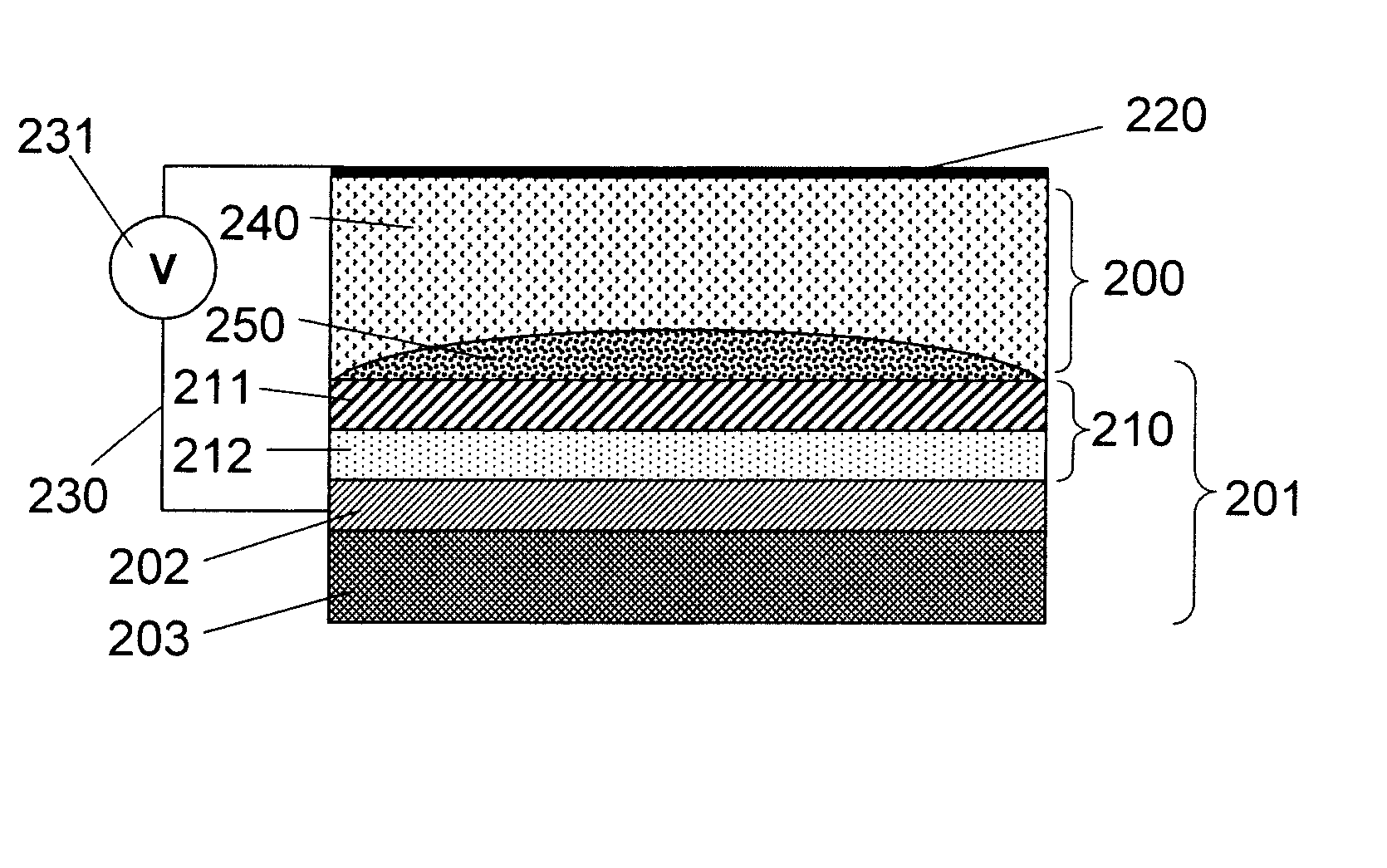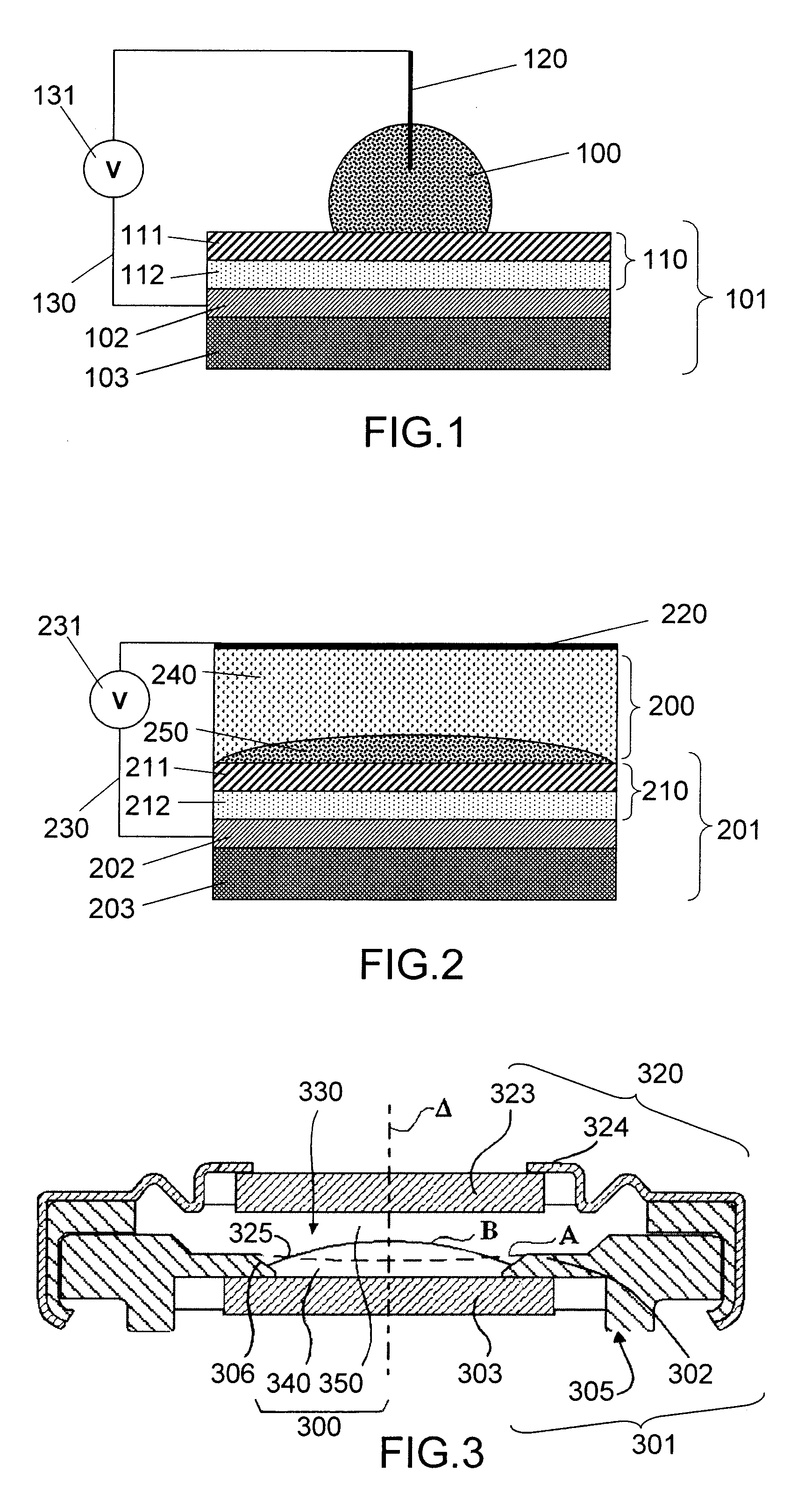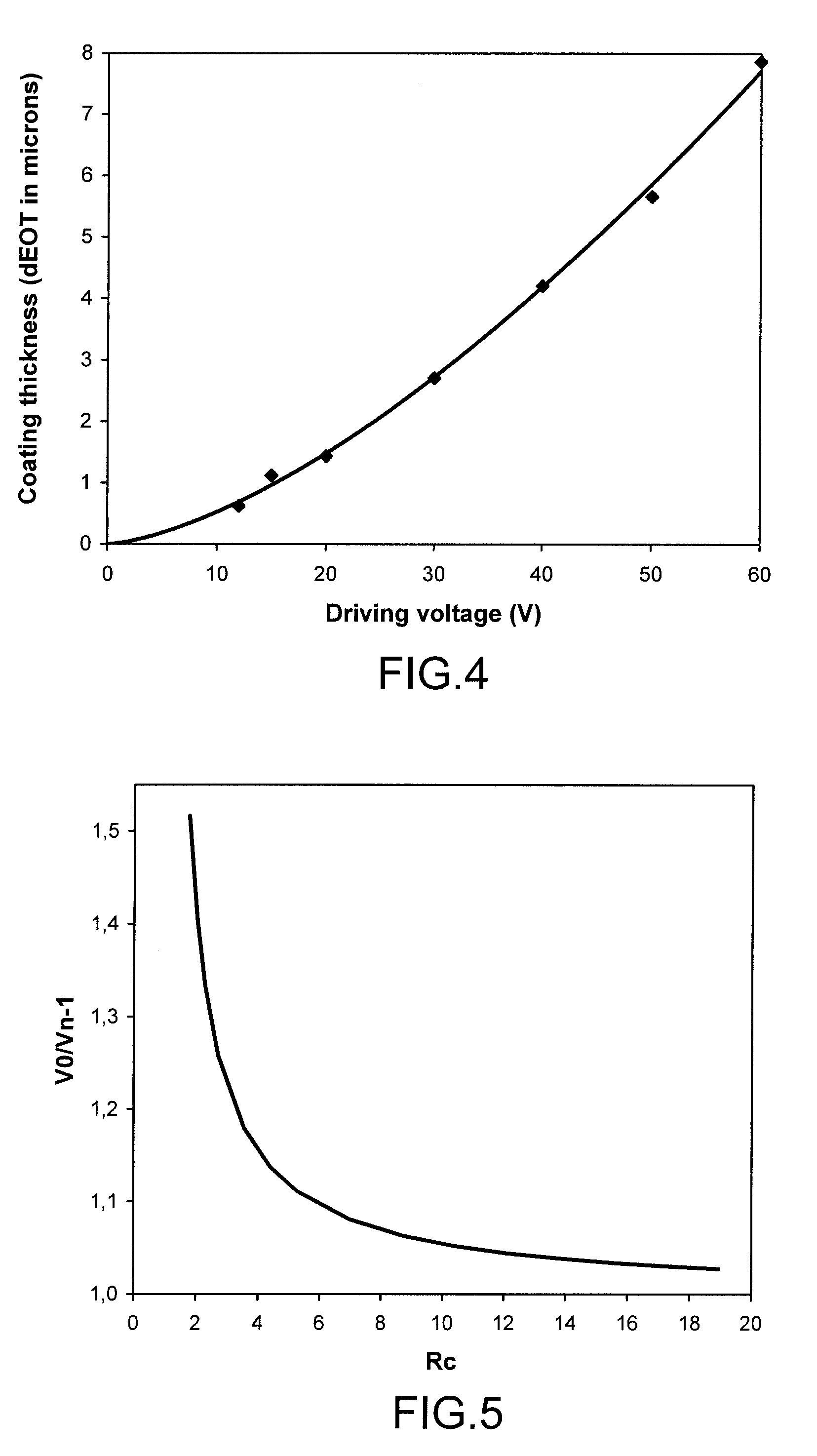Dielectric coatings for electrowetting applications
a technology of dielectric coatings and electrowetting, applied in the direction of variable capacitors, natural mineral layered products, instruments, etc., can solve the problems of limited current solutions using hydrocarbon or fluoropolymer insulating layers, and few materials combining both suitable dielectric and reliable hydrophobic properties within a broad thickness rang
- Summary
- Abstract
- Description
- Claims
- Application Information
AI Technical Summary
Problems solved by technology
Method used
Image
Examples
example 1
[0219]A two layer hydrophobic coating architecture composed of a silicon oxide layer and a subsequent hydrophobic layer was deposited onto nickel plated brass bodycone.
[0220]A 500 nm silicon oxide layer was deposited by PECVD of a SiH4 and N2O mixture. The substrate temperature was held at 200° C. during deposition. The dielectric constant and dielectric strength of the silicon oxide coating was 3.9 and 10 MV / cm, respectively. PECVD was conducted in a class 1 cleanroom to minimize defects in the coating.
[0221]A 90 nm organosiloxane coating was deposited by PECVD from tetramethyldisiloxane (TMDSO) at W / FM of 33 MJ / kg based on the process parameters including 500 W of applied power and 150 sccm TMDSO flowrate. The surface of the organosiloxane coating was characterized as hydrophobic based a reference liquid contact angle (RLCA) of 16.4±1.3 degrees, polar surface energy component of 1.4 mN / m and a dispersive surface energy component of 21.5 mN / m.
[0222]FIGS. 6, 8A and 8B show the exper...
example 2
[0225]A two layer hydrophobic coating architecture composed of a silicon oxide layer and a subsequent hydrophobic layer was deposited onto a P-type, boron doped, low resistivity (i.e. 0.01-0.02 ohm·cm) silicon wafer.
[0226]A 500 nm silicon oxide layer was deposited by PECVD of a SiH4 and N2O mixture. The substrate temperature was held at 400° C. during deposition. The dielectric constant and dielectric strength of the silicon oxide coating was 3.9 and 10 MV / cm, respectively. PECVD was conducted in a class 1 cleanroom to minimize defects in the coating.
[0227]A 90 nm organosiloxane coating was deposited by PECVD from tetramethyldisiloxane (TMDSO) at W / FM of 33 MJ / kg based on the process parameters listed in Table 2. The surface of the organosiloxane coating was characterized as hydrophobic based a reference liquid contact angle (RLCA) of 16.4±1.3 degrees, polar surface energy component of 1.4 mN / m and a dispersive surface energy component of 21.5 mN / m.
[0228]Coatings exhibited high diel...
example 3
[0229]A two layer hydrophobic coating architecture was deposited onto silicon wafers by the same process as in Example 2 using the same reagents. Coated wafers were annealed in a N2 purged vacuum oven for 1 hour at 400° C. The surface of the organosiloxane coating was characterized as hydrophobic based on reference liquid contact angle (RLCA) of 12.3±1.1 degrees.
PUM
| Property | Measurement | Unit |
|---|---|---|
| dielectric constant | aaaaa | aaaaa |
| thickness | aaaaa | aaaaa |
| thickness | aaaaa | aaaaa |
Abstract
Description
Claims
Application Information
 Login to View More
Login to View More - R&D
- Intellectual Property
- Life Sciences
- Materials
- Tech Scout
- Unparalleled Data Quality
- Higher Quality Content
- 60% Fewer Hallucinations
Browse by: Latest US Patents, China's latest patents, Technical Efficacy Thesaurus, Application Domain, Technology Topic, Popular Technical Reports.
© 2025 PatSnap. All rights reserved.Legal|Privacy policy|Modern Slavery Act Transparency Statement|Sitemap|About US| Contact US: help@patsnap.com



